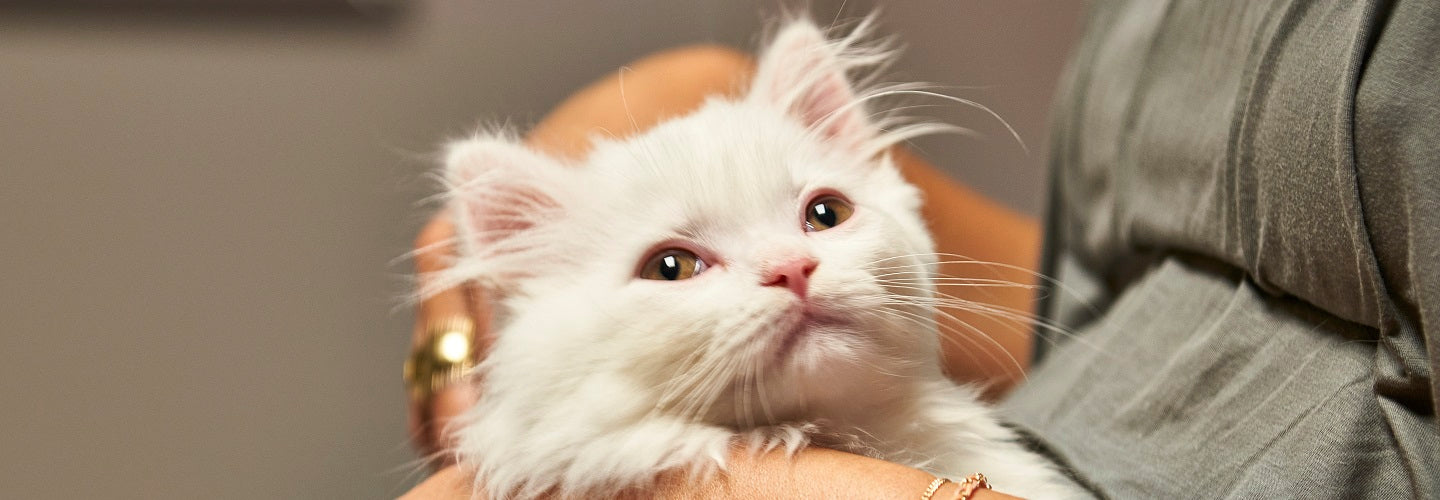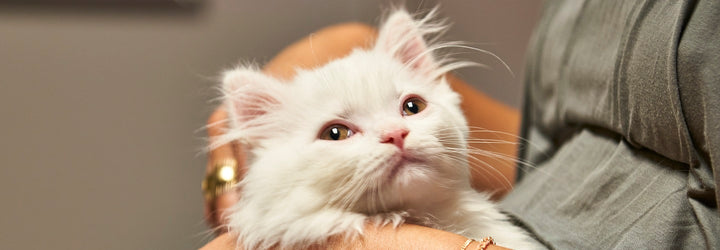

Posted by Emma Oldroyd, on
Tiny Paws: Kitten Toilet Training
Those first few weeks at home with your new kitten are full of learning and adapting. Right from their arrival, it’s important that your kitten knows where to visit the loo- especially if they’re going to be an indoor cat.
Where do you start? We’ve put together a short guide on how to litter train your kitten and help you on your way with house training your new best friend.

Firstly, it’s important to remember that your kitten needs their privacy when it comes to toilet time, just like us! So, place their litter tray somewhere quiet, away from the hustle and bustle of the house. It’s also important to ensure that their litter tray is as far away from their feeding & drinking area as possible, if their tray is too close it can put them off their food and water.
Spotting the signs
As part of litter training, you’ll need to learn your cat’s cues for the toilets. This will help you spot when they are ready to go to the toilet so you can place them in their litter tray quickly during those initial stages.
Keep placing your kitten in their litter tray over the course of the day (first thing in the morning, after their meals and just before bedtime) as well as when they look like they need the toilet. This will help them establish the scent and location of their litter tray. Then, once they recognise where their litter tray is, you can leave them to it!
Using the right litter
As well as cleaning their litter tray daily- using an odour absorbing cat litter will help the litter tray stay fresh for longer, and stop the urine scent from overpowering the natural litter scent.
We would recommend using non-clumping cat litter on short-haired kittens aged up to 6 months, and long-haired kittens up to 9 months old.
You can read our full guide to cat litter and litter trays online here.
How to deal with accidents
It’s important to remember that accidents do happen! And you should never punish your kitten if they have a toilet accident, as when it comes to kittens and cats- there could be a number of reasons these accidents suddenly start to happen.
- Attention seeking (especially if routines are changing)
- Dirty litter tray (always check it has been thoroughly cleaned)
- Reaching sexual maturity
- Marking their territory (they may feel threatened, especially if in a multi-pet household)
- They’re not happy with the litter tray’s current position
You should always clean up kitten accidents with a pet-friendly, odourless cleaning product to avoid confusing smells.
Rewarding your kitten with praise and low calorie kitten treats as they become more successful at litter training will reinforce good toilet habits and help give your kitten a positive association with their litter tray.
More questions about kittens? Speak to our pet experts in-store or online via our Pets Chat for advice on toilet training, litter types and more!